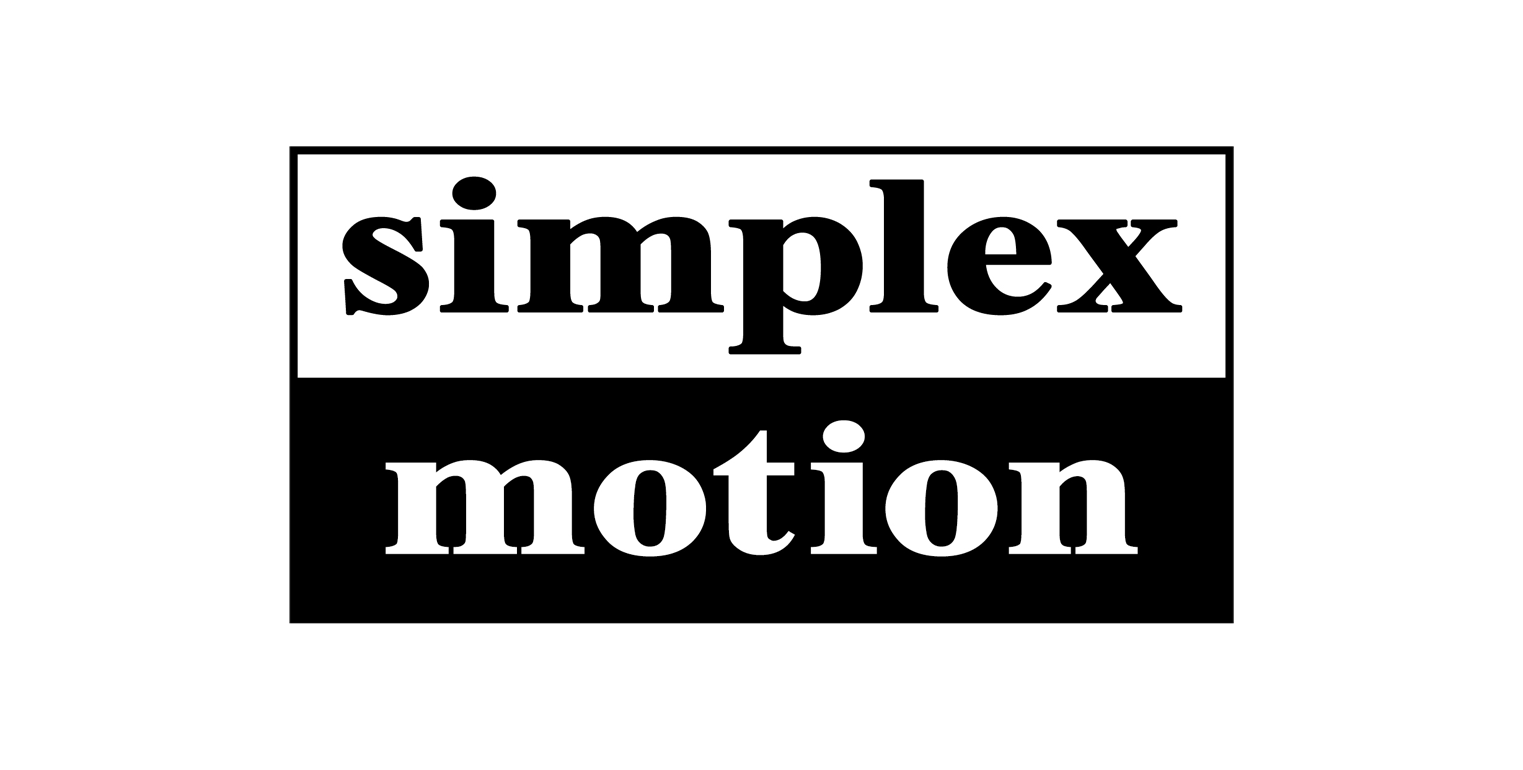PATENTED ENCODER TECHNOLOGY FOR MOTION CONTROL
Simplex Motion’s integrated motors are engineered for high output torque, energy efficiency and precise control. The compact design enables cost optimization and easy configuration. Below, you can find an overview of the key features. For further information you are welcome to visit the support section, contact us or check out our Youtube channel.
Integrated Servomotor – All in one
- Electric motor
- Position feedback sensor
- Motion controller
- Motor drive power electronics
- Digital and/or analog inputs and outputs
- Communication interface
- No extra housing keeps weight and size down
- No moving parts except motor axis
Small footprint – Allowing for tight integration
Due to the open frame design of the servomotor, without any excess housing of the servomotor, the integration of the servomotor in a design can be done very tight.
High torque vs. size and weight
Compared to conventional servomotors the torque to weight and torque to size ratio is much higher
Precise control
Advanced integrated control, the servomotor can be precisely controlled.
- Speed control from 0 rpm
- High encoder resolution with 4096 positions / turn
- Real time measurement of output torque
Simple setup
Using the Simplex Motion Tool Software, for an easy setup of the servomotor performance such as movement pattern, speed, acceleration ramps, i/o etc
Energy efficiency
Utilizing the advantages of a brushless motor and the advanced control system with a closed loop feedback, energy utilization is optimized
- 50% higher efficiency than a regular DC motor
- Up to 10 times higher efficiency than a stepper motor
Three basic run modes
Choose between three basic run modes:
- Speed
- Torque
- Position
Easy to set limits
Easy setup of limits and motor parameters
- Torque
- Speed
- Acceleration
- Deceleration
Multiple I/Os
Several different I/O and communication options
- Up to 8 Digital inputs
- Up to 4 analog inputs
- Up to 4 digital outputs
- Modbus RTU
- CAN
Stand alone setup
The servomotor can run as a standalone autonomous unit, or as an intelligent part of a distributed automation system.
Built in functions include:
- Homing
- Use torque or external sensors as homing trigger
- I/O
- Trigger on external input
- Send signals or control other external functions (Digital and PWM)
- Programmable functions and movement patterns
- Homing
Advanced running modes
There are a number of built-in functions to enable more advanced control
- Events
- Program a set of functions triggered by internal conditions (speed, torque, direction etc.) or external input
- Sequence
- Make the servomotor repeat a sequence of positions/movements
- Synchronization – Master-Slave
- Have one servomotor send control/start signals to other servomotors
- Step/Direction (e.g. Stepper motor)
- Control the servomotor using Step/Direction control
- Encoder signal
- Run the servomotor using an encoder signal or send an encoder signal to other parts of the system
- Analog signal
- Use an analogue signal to control e.g. speed or position
- Servo (R/C) PWM
- Control the servomotor using R/C servo signals (pulse length)
- Events
More advanced running modes
If more advanced running modes are required, the customer has the possibility to write its own application code using simple C-programming. There is an API available that allows easy access to motor functions from the C-code. The same API is available for control from a remote computer (Windows, Mac, Linux).



